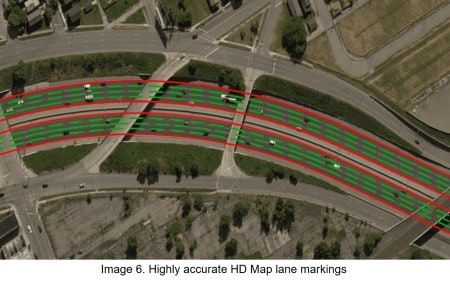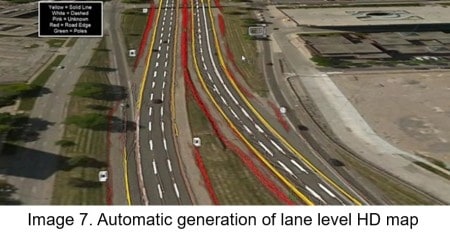Toyota Research Institute-Advanced Development (TRI-AD) has successfully completed several proof of concepts (PoCs) of high-definition (HD) map-building for surface roads, which resulted to a relative accuracy of less than 50 centimetres – a good level required for automated driving.
The company is the automated driving software development arm of Japanese car maker Toyota Motor.
After the recently-concluded PoCs, TRI-AD verified that two methods are effective for HD map building:
- Building map information for automated driving via map data derived from the cameras of ordinary vehicles as well as satellite imagery, without the use of conventional means of collecting data such as survey vehicles.
- Applying vehicle data from TRI-AD's Automated Mapping Platform (AMP) to other companies' platforms by converting data formats and applying correcting algorithms.
“We got a step closer to a future where automated driving becomes a safer and more accessible technology for all. We will continue to cooperate with partners as we further refine our accuracy,” said Mandali Khalesi, vice president of automated driving strategy and mapping at TRI-AD.
Using the results of the PoCs, TRI- AD expects the delay in updating HD maps for automated driving can be shortened, areas for HD map coverage can be expanded quickly, and costs to build and maintain HD maps can be substantially reduced.
Product of collaboration
TRI-AD worked with at least five companies on testing different aspects of HD mapping for automated driving.
Since April last year, it partnered with Earth intelligence and space infrastructure specialist Maxar Technologies and IT service provider NTT DATA in creating automated HD maps for automated vehicles using the highest-resolution commercial satellite images.
This PoC showed it is now possible to automatically extract the required map information by analysing and removing and correcting non-map image pixels such as automobiles, shadows, and occlusions due to the inclination of buildings in satellite imagery. Currently, maps with a relative accuracy of 25 centimetres were created within the 23 wards in Tokyo, as well as six cities globally, and were verified to be useful for automated driving purposes. (Refer to Image 1, 2 and 3.)
 Another POC was conducted around camera-based HD mapping, using dashcam drive recorders to detect and place key road features such as lane markings, traffic signals and signs - within the 23 wards in Tokyo and 2 cities in the United States.
Another POC was conducted around camera-based HD mapping, using dashcam drive recorders to detect and place key road features such as lane markings, traffic signals and signs - within the 23 wards in Tokyo and 2 cities in the United States.
TRI-AD collaborated with road intelligence platform provider CARMERA for this project, achieving a relative accuracy of 40 centimetres for key navigation features – a major advance in camera-only detection. (Refer to images 4 and 5)
 During testing, the project team deployed CARMERA's Real-Time Events and Change Management engine, a hardware-agnostic computer vision and processing technology. It detects, validates and delivers navigation-critical updates to CARMERA's regenerative HD mapping system in minutes rather than months. By using consumer-grade vehicle cameras that are common around the world, TRI-AD and CARMERA demonstrated a scalable approach to next-generation map making.
During testing, the project team deployed CARMERA's Real-Time Events and Change Management engine, a hardware-agnostic computer vision and processing technology. It detects, validates and delivers navigation-critical updates to CARMERA's regenerative HD mapping system in minutes rather than months. By using consumer-grade vehicle cameras that are common around the world, TRI-AD and CARMERA demonstrated a scalable approach to next-generation map making.
A third POC was done with independent location technology specialist TomTom International, where it lower-class roads (urban roads) – including lane markings necessary for automated driving – could be successfully created or updated in near real-time on TomTom's HD map. The solution was achieved by verifying the reliability of the vehicle data collected by TRI-AD's AMP, and then converting it for input into TomTom's cloud-based transactional map- making platform. (Refer to image 6)

Lastly, TRI-AD worked with location data and technology platform provider HERE Technology around correcting the positional errors in the vehicle data by creating surface road maps automatically using the latter’s advanced "self-healing" technology. (Refer to image 7)
 By using only vehicle sensor data, HERE ingested the data into its platform and automatically generated HD maps including lane level information required for automated driving. HERE's HD Live Map has already been selected to power some of the world's most prestigious OEM's Level 3 automated vehicle programmes.
By using only vehicle sensor data, HERE ingested the data into its platform and automatically generated HD maps including lane level information required for automated driving. HERE's HD Live Map has already been selected to power some of the world's most prestigious OEM's Level 3 automated vehicle programmes.



